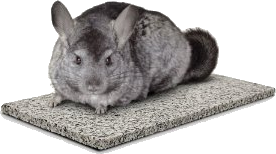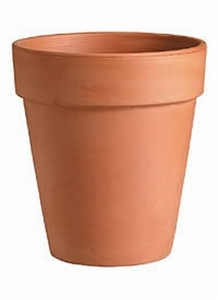
Another factor to consider is the chinchilla’s activity level. While 70 to 75 degrees may be acceptable for a chinchilla, when the chinchilla is more active the temperature should be lower. An example of this is playtime. During playtime, chinchillas can be much more active than they are in their cages. It is best to lower the temperature of the room to around 65 – 70 degrees prior to the start of playtime.
Other occasions in which a chinchilla can overheat are the A/C unit dying and the electricity being out. It is best to be prepared for it ahead of time. There are several things that can be done. Following is a list of some, but, by no means all, of the ways a chinchilla can be kept cool in an emergency.
-
Keep a bag of river stone (smooth, small pebbles) in the freezer. When needed, it can be placed in a stock pot or glass pitcher, placed in the cage and used as a chiller. Another way to use the stone is to place a layer of it in a shallow baking dish. Put this in the cage and allow the chinchilla to lie on it.
 A chinchilla on a "Chin Chiller"
A chinchilla on a "Chin Chiller"
- A wide variety of items such as unglazed floor tiles, bricks, marble slabs, and solid surface counter top pieces can all be frozen and then placed in the cage.
- Items made of terracotta can be soaked in water, wiped off, and used to cool the cage through evaporation.
- Plastic bottles can be filled with water, frozen, wrapped in fleece and put in the cage.
- A stock pot can be filled with ice. Place the lid on it upside down and use a brick to weigh it down.
 A terra cotta pot
A terra cotta pot
 River Rock
River Rock
 Thermometer/hydrometer combination
Thermometer/hydrometer combination




